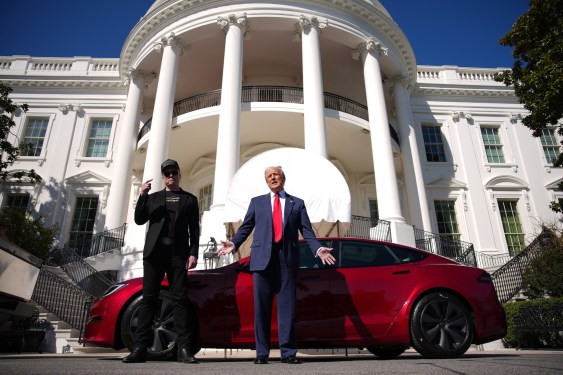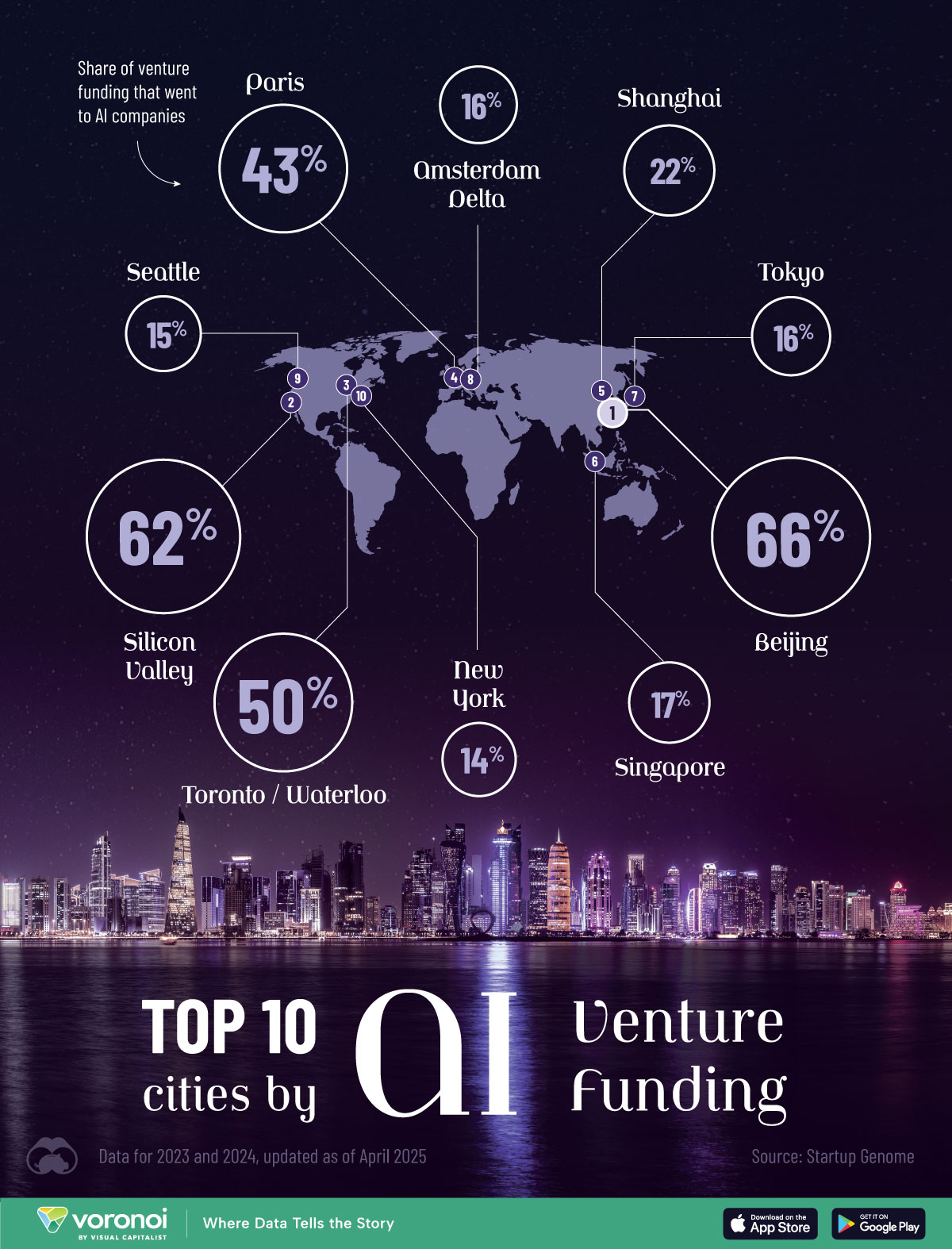AI Investment Landscape: North America’s Unmatched Dominance Amid Political Headwinds

In the ever-evolving world of artificial intelligence (AI), North America continues to dominate the landscape, drawing a staggering $79.74 billion in venture capital for AI and machine learning ventures in 2025 alone. This astronomical figure accounts for a remarkable 86.2% of global VC funding for AI, highlighting the United States as the undisputed epicenter of innovation, despite facing numerous political challenges.
Between February and May of this year, venture capitalists initiated a massive infusion of $69.7 billion into North American AI startups over 1,528 transactions. In contrast, European AI initiatives attracted a mere $6.4 billion through 742 deals, while Asia-based startups lagged even further behind, securing only $3 billion across 515 investments. The stark disparity in funding realities poses critical questions about the future trajectory of AI development globally.
Political dynamics in the U.S. orchestrate a complex backdrop for these funding patterns. The Trump administration has been critiqued for its austerity measures impacting research funding, limiting opportunities for foreign scholars in AI, and maintaining a regulatory environment perceived as unstable. Such measures have been seen as detrimental yet, paradoxically, have not deterred investors from believing in the potential of U.S. AI innovations to yield substantial returns.
Across the Atlantic, Europe has touted ambitions to become a leader in AI advancement, pledging hundreds of billions in euro investments to bolster its own capabilities. Notable success stories have emerged, with companies like Mistral and Aleph Alpha paving the way. However, despite expectations of a monumental shift in VC allocations to European firms as a reaction to U.S. policy, there is no substantial evidence of an investment exodus from North America to Europe or a significant rise in overseas funding—at least not yet.

Asia, too, especially China, has showcased burgeoning AI enterprises such as DeepSeek, yet it remains under severe constraints, particularly due to export controls affecting access to essential AI components. Governments are grappling with balancing innovation and regulation amidst rising geopolitical tensions.
The VC funding ecosystem for AI projects remains robust in North America, but the trend of receiving such an overwhelming portion of the investment pie illustrates the systemic trust in U.S. technological capabilities and a willingness to overlook political volatility. Investors appear undeterred by the complexity of legislative landscapes and continue to see promise in the innovative spirit that characterizes the American AI market.
In summary, as we advance into 2025, North America’s commanding share—75.6% of all global VC AI funding in 2024—has only widened, emphasizing a trend that underscores the resilience and attractiveness of the U.S. AI sector. Investors remain committed to fostering technological advancements, even amid the backdrop of tumultuous political climates.
For readers looking to explore AI’s transformative potential further, our articles on Top AI Tools for Marketing and AI’s Role in Revolutionizing Recruitment provide deeper insights into the innovations reshaping industries across the globe.
In the ever-evolving world of artificial intelligence (AI), North America continues to dominate the landscape, drawing a staggering $79.74 billion in venture capital for AI and machine learning ventures in 2025 alone. This astronomical figure accounts for a remarkable 86.2% of global VC funding for AI, highlighting the United States as the undisputed epicenter of innovation, despite facing numerous political challenges.
Between February and May of this year, venture capitalists initiated a massive infusion of $69.7 billion into North American AI startups over 1,528 transactions. In contrast, European AI initiatives attracted a mere $6.4 billion through 742 deals, while Asia-based startups lagged even further behind, securing only $3 billion across 515 investments. The stark disparity in funding realities poses critical questions about the future trajectory of AI development globally.
Political dynamics in the U.S. orchestrate a complex backdrop for these funding patterns. The Trump administration has been critiqued for its austerity measures impacting research funding, limiting opportunities for foreign scholars in AI, and maintaining a regulatory environment perceived as unstable. Such measures have been seen as detrimental yet, paradoxically, have not deterred investors from believing in the potential of U.S. AI innovations to yield substantial returns.
Across the Atlantic, Europe has touted ambitions to become a leader in AI advancement, pledging hundreds of billions in euro investments to bolster its own capabilities. Notable success stories have emerged, with companies like Mistral and Aleph Alpha paving the way. However, despite expectations of a monumental shift in VC allocations to European firms as a reaction to U.S. policy, there is no substantial evidence of an investment exodus from North America to Europe or a significant rise in overseas funding—at least not yet.

Asia, too, especially China, has showcased burgeoning AI enterprises such as DeepSeek, yet it remains under severe constraints, particularly due to export controls affecting access to essential AI components. Governments are grappling with balancing innovation and regulation amidst rising geopolitical tensions.
The VC funding ecosystem for AI projects remains robust in North America, but the trend of receiving such an overwhelming portion of the investment pie illustrates the systemic trust in U.S. technological capabilities and a willingness to overlook political volatility. Investors appear undeterred by the complexity of legislative landscapes and continue to see promise in the innovative spirit that characterizes the American AI market.
In summary, as we advance into 2025, North America’s commanding share—75.6% of all global VC AI funding in 2024—has only widened, emphasizing a trend that underscores the resilience and attractiveness of the U.S. AI sector. Investors remain committed to fostering technological advancements, even amid the backdrop of tumultuous political climates.
For readers looking to explore AI’s transformative potential further, our articles on Top AI Tools for Marketing and AI’s Role in Revolutionizing Recruitment provide deeper insights into the innovations reshaping industries across the globe.
